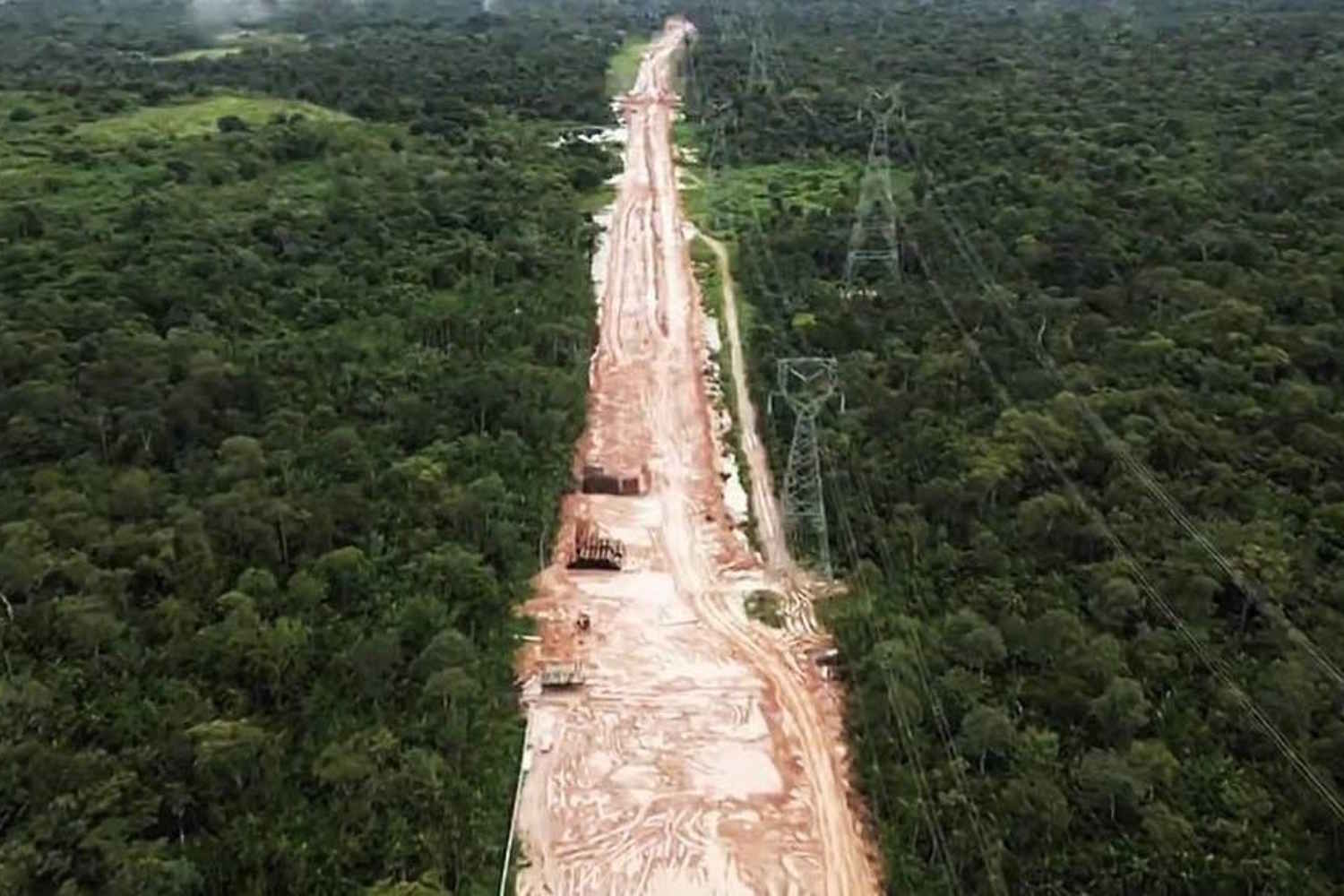In the heart of the Amazon, in Belém, COP30 will be held in November. For the occasion, it was thought a good idea to cut down trees to make way for a new four-lane highway

The city of Belém, in the heart of the Brazilian Amazon, will welcome an estimated 50,000 visitors in November for the 30th UN Climate Change Conference (COP30). To accommodate the record number, local government has launched several large-scale infrastructure projects, including the construction of a new four-lane highway that will carve through a protected area of the rainforest.
A few kilometers away from Belém, the virgin forest already gives way to a cleared patch of disturbed land. Here one finds a partially constructed road, with sections of earth piercing through the foliage. Stacks of felled tree trunks are heaped by the roadside, a physical testament to recent deforestation.
Construction site in full swing
The construction site is in full swing, with bulldozers and excavators clearing the land, making way between ancient trees where soon thousands of vehicles will pass through on their way to Belém. This surreal image—a highway being cut through the middle of the Amazon—immediately evokes the paradox that is generating controversy in Brazil and elsewhere.
You can't make this stuff up!Tens of thousands of acres of protected Amazon rainforest are being cleared and paved over…
Posted by David Takle on Thursday, March 13, 2025
The highway for COP30
The idea of building a new highway straight through the center of the Amazon rainforest is hardly new. In 2012, the Pará state government, based in its capital Belém, promoted the project for an “Avenida Liberdade” (State Road PA-020) before shelving it on environmental grounds. However, the project was resumed in preparation for COP30 and was officially approved in June 2024. The project includes 8.26 miles of asphalt, two lanes in both directions, as well as three viaducts and a bridge over the Aurá River. The new road will relieve traffic congestion in Belém, which is preparing to receive tens of thousands of tourists and delegates for the climate conference, say local authorities.
At the institutional level, the highway is presented as a strategic investment in regional development. Pará’s Secretary of Infrastructure, Adler Silveira, even called it a “sustainable highway” when he spoke to the BBC, outlining how wildlife corridors, cycle lanes, and solar-powered streetlights would be part of the design.
The government also emphasizes that the highway will be a legacy for citizens long after COP30, benefiting connectivity in the Belém metropolitan area for years to come. The new infrastructure is part of a broader plan to modernize the city for the summit that also includes the expansion of the international airport (which will increase capacity to 14 million passengers annually from 7 million), the building of new hotels, and the modernization of the river port, as well as the highway that will connect Belém to the region better. For the governor and his supporters, the projects represent an opportunity for development and national pride, a showcase for Brazil’s ability to host a high-profile event in the heart of the Amazon without sacrificing modern infrastructure.
Environmental concerns are real
The Amazon rainforest, the largest and most biodiverse tropical ecosystem on the planet, plays a critical role in absorbing carbon and regulating the global climate. It should be no shock, then, that the idea of clear-cutting trees in a nature reserve to make way for a climate summit seems to many like an unforgivable contradiction. The widespread fear is that the forest is being sacrificed at the altar of an event that must, by its very nature, be trying to preserve it.
There have been the predictable environmental and scientific worries voiced regarding the ecological impact of the new road. The road will split the forest in two, separating what was formerly joined. Specialists claim this will “fragment the ecosystem,” severing natural wildlife corridors that animals utilize to migrate and search for food. Essentially, numerous already threatened species would be left with smaller pieces of habitat with fewer resources and less chance of survival.
The environmental organizations also refer to the domino effect that a large Amazon highway can create. The opening of new roads tends to be followed by more illegal deforestation and the advance of invasive economic activities such as logging, cattle ranching, and mining into what were once remote areas.
Besides scientists, locals are also coming out to protest the new highway. Rural communities have lived for generations on sustainable harvesting of forest fruits and forest products, and they do not wish to lose all that. It would be paradoxical to argue with them—a paradox of COP30.
